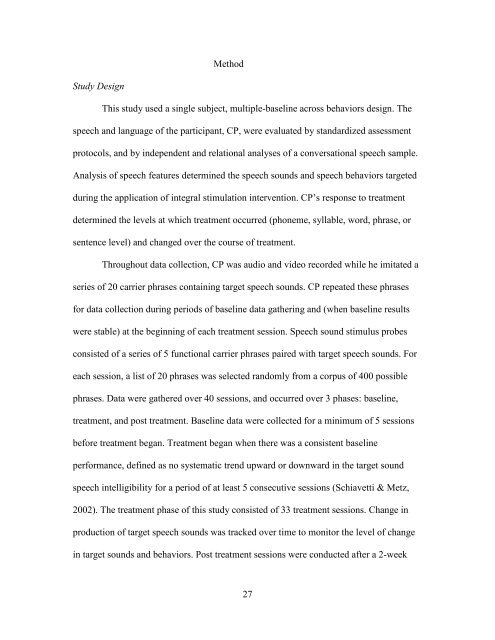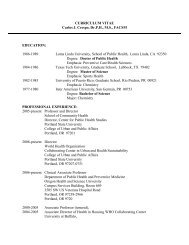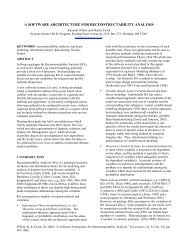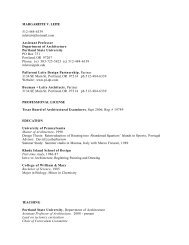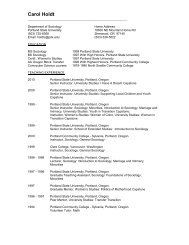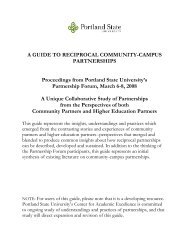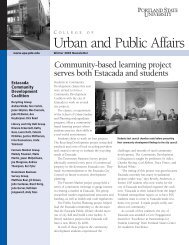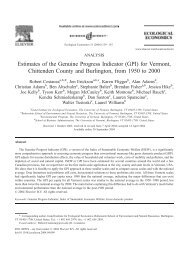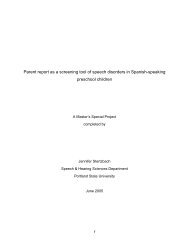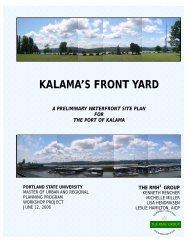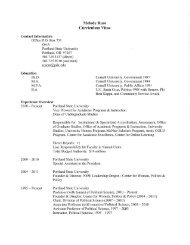Effects of integral stimulation therapy on speech - Portland State ...
Effects of integral stimulation therapy on speech - Portland State ...
Effects of integral stimulation therapy on speech - Portland State ...
You also want an ePaper? Increase the reach of your titles
YUMPU automatically turns print PDFs into web optimized ePapers that Google loves.
Method<br />
Study Design<br />
This study used a single subject, multiple-baseline across behaviors design. The<br />
<strong>speech</strong> and language <str<strong>on</strong>g>of</str<strong>on</strong>g> the participant, CP, were evaluated by standardized assessment<br />
protocols, and by independent and relati<strong>on</strong>al analyses <str<strong>on</strong>g>of</str<strong>on</strong>g> a c<strong>on</strong>versati<strong>on</strong>al <strong>speech</strong> sample.<br />
Analysis <str<strong>on</strong>g>of</str<strong>on</strong>g> <strong>speech</strong> features determined the <strong>speech</strong> sounds and <strong>speech</strong> behaviors targeted<br />
during the applicati<strong>on</strong> <str<strong>on</strong>g>of</str<strong>on</strong>g> <str<strong>on</strong>g>integral</str<strong>on</strong>g> <str<strong>on</strong>g>stimulati<strong>on</strong></str<strong>on</strong>g> interventi<strong>on</strong>. CP’s resp<strong>on</strong>se to treatment<br />
determined the levels at which treatment occurred (ph<strong>on</strong>eme, syllable, word, phrase, or<br />
sentence level) and changed over the course <str<strong>on</strong>g>of</str<strong>on</strong>g> treatment.<br />
Throughout data collecti<strong>on</strong>, CP was audio and video recorded while he imitated a<br />
series <str<strong>on</strong>g>of</str<strong>on</strong>g> 20 carrier phrases c<strong>on</strong>taining target <strong>speech</strong> sounds. CP repeated these phrases<br />
for data collecti<strong>on</strong> during periods <str<strong>on</strong>g>of</str<strong>on</strong>g> baseline data gathering and (when baseline results<br />
were stable) at the beginning <str<strong>on</strong>g>of</str<strong>on</strong>g> each treatment sessi<strong>on</strong>. Speech sound stimulus probes<br />
c<strong>on</strong>sisted <str<strong>on</strong>g>of</str<strong>on</strong>g> a series <str<strong>on</strong>g>of</str<strong>on</strong>g> 5 functi<strong>on</strong>al carrier phrases paired with target <strong>speech</strong> sounds. For<br />
each sessi<strong>on</strong>, a list <str<strong>on</strong>g>of</str<strong>on</strong>g> 20 phrases was selected randomly from a corpus <str<strong>on</strong>g>of</str<strong>on</strong>g> 400 possible<br />
phrases. Data were gathered over 40 sessi<strong>on</strong>s, and occurred over 3 phases: baseline,<br />
treatment, and post treatment. Baseline data were collected for a minimum <str<strong>on</strong>g>of</str<strong>on</strong>g> 5 sessi<strong>on</strong>s<br />
before treatment began. Treatment began when there was a c<strong>on</strong>sistent baseline<br />
performance, defined as no systematic trend upward or downward in the target sound<br />
<strong>speech</strong> intelligibility for a period <str<strong>on</strong>g>of</str<strong>on</strong>g> at least 5 c<strong>on</strong>secutive sessi<strong>on</strong>s (Schiavetti & Metz,<br />
2002). The treatment phase <str<strong>on</strong>g>of</str<strong>on</strong>g> this study c<strong>on</strong>sisted <str<strong>on</strong>g>of</str<strong>on</strong>g> 33 treatment sessi<strong>on</strong>s. Change in<br />
producti<strong>on</strong> <str<strong>on</strong>g>of</str<strong>on</strong>g> target <strong>speech</strong> sounds was tracked over time to m<strong>on</strong>itor the level <str<strong>on</strong>g>of</str<strong>on</strong>g> change<br />
in target sounds and behaviors. Post treatment sessi<strong>on</strong>s were c<strong>on</strong>ducted after a 2-week<br />
27


